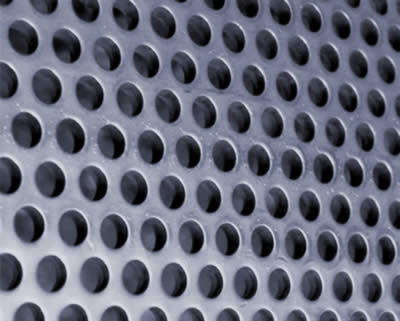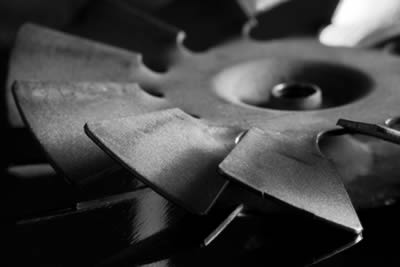Metal Material Guide
Ferrous Metal vs. Non-Ferrous Metal?
 Since ‘’ferrum” is the Latin word for “iron”, in a few words ferrous are metals that have iron in their composition and nonferrous are metals without any presence of iron. Each kind comes with its own set of characteristics and attributes which define also the uses they are mostly indicative of.
Since ‘’ferrum” is the Latin word for “iron”, in a few words ferrous are metals that have iron in their composition and nonferrous are metals without any presence of iron. Each kind comes with its own set of characteristics and attributes which define also the uses they are mostly indicative of.
Non-ferrous metals have been utilized by humans since the onset of civilization. The initial copper findings around 5000 BC highlighted the end of the Stone period and the start of the Copper period. The eventual discovery of bronze, alloy, and tin also marked the onset of the Bronze period.
Ferrous metals were first used reportedly in approx. 1200 BC at a time when iron generation was widespread and this carried on in the Iron period.
Ferrous Metals
 Some widely used ferrous metal types were cast iron, wrought iron, alloy steel, and carbon steel. These types of metals are valued based on their tensile power and integrity. Carbon steel--which also goes by the name ‘structure steel’--is very commonly used in the construction field and is often the metal of choice in the highest skyscrapers and lengthiest bridges. Ferrous metal kinds like this are also found in shipping carriers, industrial piping systems, automotives, train tracks, and many corporate or home machines and tools.
Some widely used ferrous metal types were cast iron, wrought iron, alloy steel, and carbon steel. These types of metals are valued based on their tensile power and integrity. Carbon steel--which also goes by the name ‘structure steel’--is very commonly used in the construction field and is often the metal of choice in the highest skyscrapers and lengthiest bridges. Ferrous metal kinds like this are also found in shipping carriers, industrial piping systems, automotives, train tracks, and many corporate or home machines and tools.
Ferrous Metals display an elevated carbon concentration which leaves them exposed to rust when there are left in high moisture environments. There are a couple of exclusions to this rule though: wrought iron in particular is rust-resistant because of its clarity and stainless steel which contains a chromium level is also rust-resistant. The vast majority of ferrous metals display magnetic properties which make them especially valuable for motive and electrical usages. When ferrous metals compose your fridge door, you can easily attach your pin list using a magnet.
Alloy Steel - have other materials added in their composition like for example, nickel, chromium, and titanium to increase strength and endurance without actually raising its weight. Stainless steel is also a common alloy steel that has chromium added. Alloy steel materials are generally employed in building/construction, machinery, and electrical applications.
Carbon Steel - has a higher concentration of carbon as opposed to other steel kinds which is something that deems it extremely tough. It is widely used in the production of machinery, tools, appliances, blades, drills, springs, and taps. It can also maintain an acute cutting point.
Cast Iron - is a type of alloy metal that consists of iron, carbon, and silicon materials. Cast iron is tough and wear-resistant. It is incorporated in water pipe systems, machinery, automotive uses, and stoves.
Steel - is produced by incorporating iron molecules to carbon to make it tougher. Alloy Steel is even more hard and dense as it also includes the addition of heavy metals like chromium and nickel. Steel is basically produced by warming and melting iron in direct fire heaters and then transferred into molds to shape steel bars. Steel is very common in the building and manufacturing fields.
Wrought Iron - is an alloy type with a very low concentration of carbon, making it nearly pure iron. When it is being produced, amounts of slag are introduced to make it more resistant to friction and oxidation. Still, it is not high enough in terms of toughness and stress-resistance. Wrought iron is usually applied to fencing, agricultural tools, nails, railings, chains, and numerous ornaments
Non-Ferrous metal types
 Non-ferrous metals that do not bear any iron in their composition are copper, aluminum, zinc, tin, gold, and silver. Their key strength compared to ferrous materials is their flexibility. They don’t have any iron in their composition which makes them also more rust and friction-resistant and they are indicated for use in liquid pipes, gutters, roofs, and external signs. They also display no magnetic properties which is an advantage in various electronic and wiring systems.
Non-ferrous metals that do not bear any iron in their composition are copper, aluminum, zinc, tin, gold, and silver. Their key strength compared to ferrous materials is their flexibility. They don’t have any iron in their composition which makes them also more rust and friction-resistant and they are indicated for use in liquid pipes, gutters, roofs, and external signs. They also display no magnetic properties which is an advantage in various electronic and wiring systems.
Aluminum - is a material that has a low weight and toughness. It can be cast, worked, machine-operated and welded with ease. Aluminum is not indicated for high-temperature areas. Due to its lightweight properties, it is indicated for use in aircraft and food cans as well as pistons, cars, railways and kitchen tools.
Copper - is a reddish orange in shade, very pliable and flexible and has a high carrier level of electricity and heat. Copper is mainly utilized in the electric field as a type of wire and in other carriers. It is also found in sheet roofs, cartridge containers, bearings, and statuses. Brass also made from copper and mixed with zinc.
Lead - is a non-tough, heavy, and pliable metal that has a low melting temperature and tensile power. It is resistant to moisture triggered corrosion and various acids. Lead is also commonly utilized in many electrical cables, batteries, and building and soldering fields.
Tin - is a very soft metal with a high degree of flexibility and low tensile integrity. It is often the metal of choice when it comes to avoiding friction. Tin steel is also employed to produce food cans. Towards the end of the 19th century, tin foil was also used as food wrap but aluminum foil eventually took its place. Tin can also be combined with copper to make tin brass and bronze materials.
Zinc - is a metal with a low to mold strength and melting temperature. It can be processed through machines with ease but it may need warming to prevent the accumulation of crystals. Zinc is also commonly incorporated in galvanization, which refers to the procedure of adhering a protective zinc layer to iron or steel to resist rust.
Are you looking for Custom Manufacturing?
Submit an RFQ now!
